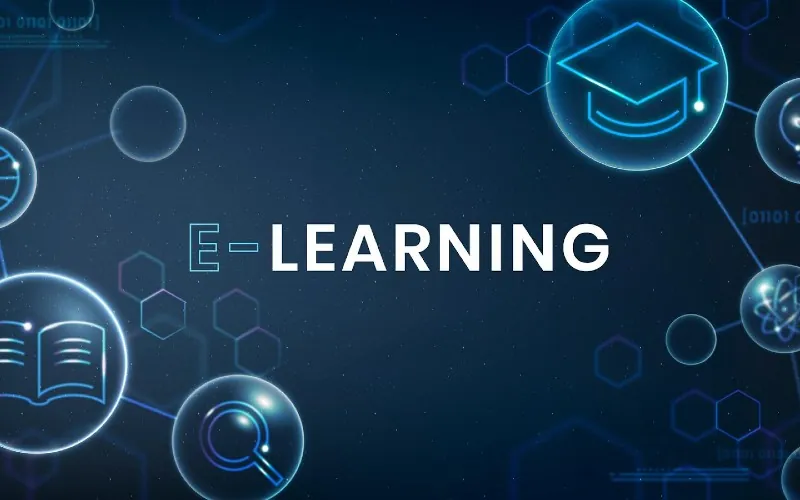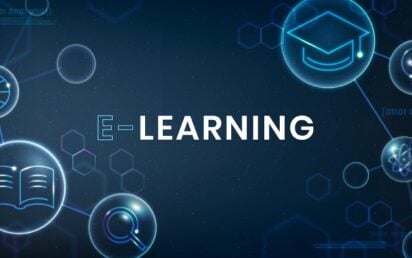Once upon a time, education was about rows of desks, chalk on blackboards, and dog-eared textbooks. That world has not gone away, but it has now been accompanied if not overtaken by something very different: e-learning.
What we are seeing is a transformation of how people learn, teach and grow. All around education, from kindergarten classes to corporate training sessions, technology has left its mark.
And it’s still in its infancy.
1. From Classrooms to Clicks: A Quick Look Back
In the early aughts, the world of online education was largely confined to corporate training portals and university lecture recordings. Clunky interfaces, slow dial-up speeds and limited course options often rendered e-learning more of a second-option fallback than an immediate go-to choice.
But change was inevitable. Broadband exploded. Smartphones arrived. And cloud-based software provided educators and students with potent ways to share, teach and learn. The classroom got a URL.
2. The Pandemic: A Tipping Point
The COVID-19 pandemic didn’t create e-learning – it hastened it. Schools and universities went online almost literally overnight. Teachers scrambled to adapt. Students adapted even faster.
Lectures were replaced by video calls. Google Classroom, Canvas and Moodle were lifelines in this regard. Zoom became a verb.
Was it perfect? No. But it demonstrated one thing: distance learning is effective and here to stay.
3. New Terrain: Between Accessibility and Flexibility
Elearning has the greatest advantage to cross geographic barriers.
“Learning only happens between 8 a.m. and 3 p.m.” mentality. Students anywhere can now take courses anywhere, whether they are in a Manhattan apartment or a village in rural India.
Integration Education
This has been a game-changer for students with disabilities, working professionals and anyone who couldn’t fit into the rigid traditional model. Screen readers, captions, and self-paced learning modules provide more personalized support.
Cost Efficiency
And then there’s price: Don’t forget about price. Digital courses are typically cheaper to produce and to offer. Students don’t have to worry about commuting to campus, finding a place to live, or buying overpriced textbooks. And for institutions, e-learning platforms scale a lot better than brick-and-mortar campuses.
With the development of e-learning as an essential component in modern education, the demand for creative and cutting-edge digital tools increases. A professional educational software development company helps make this change a reality by creating platforms that facilitate engagement, accessibility and personalization of learning. Interactive course modules, through real time analytics; tools developed by an educational software development company are supporting schools and institutions to become more responsive to the 21st century learner’s needs.
4. EdTech Platforms: The Classrooms of the Future
Platforms Powering E-Learning The popularity of e-learning would not have been possible without the platforms behind it.
MOOCs and Marketplaces
Massive Open Online Courses (MOOCs) such as Coursera, edX, and Udemy democratized elite education. You no longer have to be admitted to Harvard to take a Harvard class – all you need is Wi-Fi.
Custom LMS
Branded, secure environments that they’ve architected to suit their particular audiences are the veritable ivory towers of corporate and institutional LMS. Whether it’s ramping up new hires or conducting professional certification programs, organizations are utilizing these tools to provide standardized, scalable training.
What are Forces Behind E-Learning
The rise of e-learning There are a number of factors that have led to the rise of e-learning:
- Technological Innovations: The evolution of video streaming quality, interactive systems and AI-based analytics have helped improve the efficiency in e-learning space.
- Flexibility and Convenience – Unlike classroom settings, e-learning enables students to take courses and learn from anywhere at whatever time they want.
- Cost-Effective: When compared to traditional education,OC tends to be cheaper, making learning of high-quality available to more learners.
- Digital Shift Triggered by Pandemic: The COVID-19 pandemic has expedited the acceptance of e-learning, with schools and universities shifting to online teaching to maintain continuity.
5. Customization: The AI-Tutor
AI has become a part of several e-learning platforms. These imperative systems monitor the progress of students, and customize the material on the fly. Struggling with fractions? The system slows down. Mastered the content? It skips ahead.
The result? More effective learning. And happier learners.
Automated grading and instant quizzes track students’ progress, and interactive dashboards allow learners to see where they stand. Teachers also get a benefit — they can see which students need more help and which modules need fine-tuning.
6. Gamification & Activation – Education That Feels Like Fun
Today’s students, after all, grew up on Instagram, YouTube and mobile games. They want engagement — and edtech is providing it.
Points, badges, leaderboards and even narrative are deployed to make learning an enjoyable experience. Tools like Kahoot, Duolingo and Quizlet make people want to come back, lesson after lesson.
It’s not just about fun. It’s about motivation.
7. Corporate Learning: L&D Goes Digital
Companies worldwide are relying on digital sources for everything from compliance training to leadership development. LinkedIn Learning, Coursera for Business, and internal LMSs do their best to upskill employees at unprecedented rates.
Remote work made this change even more pressing. If you can’t bring employees to a classroom, you bring the classroom to them.
The Future: Hybrid Models And Immersive Tech
So, what’s next?
We’re already witnessing the rise of hybrid learning – ones in which digital and in-person elements are combined for the most effective results. It’s not a question of trying to replace teachers. It’s about enhancing them.
The use of Augmented Reality (AR) and Virtual Reality (VR) will increasingly be seen in areas such as medicine, engineering and history. Picture yourself dissecting a virtual frog or strolling through ancient Rome – all through a headset.
At the same time, advances in artificial intelligence will increasingly tailor personalized learning paths while blockchain could introduce secure credentialing for tracking educational achievements.
Conclusion
But the rise of e-learning is more than a change of tools – it’s a change of mindset. They are not waiting for the bell to ring anymore. They’re learning on-demand, with podcasts during a morning commute, coding tutorials on their phones, and international peers a click away.
E-learning has opened what’s available to learners farther than ever before. The question today is whether it is inclusive, engaging and ever-changing. Because in a world that changes faster than ever, the way we learn should be the most important innovation of all.


